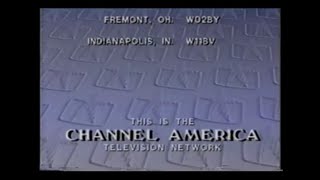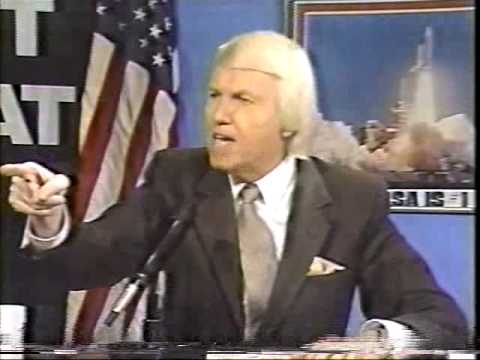The Story of Channel America: Pt. I
1st February, 2024
The story of the United States' first television network comprised entirely out of low-power television stations!
There have been endless attempts in the American television world to be the next big broadcaster, rivaling the top guys for space on the air. It rarely works out. In the fifties, DuMont Laboratories’ own network, fittingly named the DuMont Network, lost the title of the third big network to ABC, stuffed onto the UHF dial at a time when many people couldn’t receive those signals. When we finally had a big three (NBC, CBS, and ABC), there were a few attempts to make something else. The remains of the DuMont Network fizzled out into Metromedia Television, which became the start of Fox and what we’d consider today to be the definitive fourth big network. Then, in the nineties, UPN and The WB competed for fifth place, only to merge years later.
So what’s a company to do when competition is fierce and only the strongest survive? Enter Channel America. Built entirely out of low-power television (LPTV) stations and running a network for just under a decade. Instead of trying to be the biggest and the boldest, it remained purposefully small to give low-power television stations something to band together with. Yet, over twenty-five years after its death, it’s gone without a trace.

A still from a 1989 Channel America station identification.
The year is 1987 and entrepreneur David Post had a goal - to create a television network of a thousand stations. For a start-up, it seemed nearly impossible. But by focusing on low-powered stations, it started to seem a bit more plausible. Those thousand stations never did come together, but Channel America was on the air the following year.
For around three hours a day, local LPTV stations would air the programming carried by the network, much of which was the general syndicated programming independent stations carried, public domain or cheaper films (carried under the programming block “Star Club”), and the typical shoestring budget fair, aside from one notable program.

It is really hard to talk about Channel America without mentioning Hot Seat. Produced by KDOC-TV, who ironically never joined Channel America, Hot Seat was hosted by conservative (to the point of caricature) talk show host, Wally George. Seeming like something out of the movie Network, Hot Seat featured George interviewing someone, usually a controversial figure, and riling them up every episode to interesting effects. The audience would get in on the action and the show delved into chaos, crossing the line between parody and reality and led the way for others like Jerry Springer. So now you know who to thank for all those custody throwdowns you saw when you were home sick from school.
I say that it’s really hard to talk about Channel America without mentioning Hot Seat because you’ll often come across nothing but old recordings of it when searching for footage of the network. Getting lost between Hot Seat recordings, and getting lost between talking about it in this article, was another game show called The Name Game that required viewers to write into the network. This one was seemingly produced by and for Channel America. Other than a few promos, no recordings of this program exist today. The name of the network itself doesn’t help matters either and the “all-American” UHF network of the nineties ended up being PAX (which is a story for another day).
So what happened to the first all-LPTV network?
It simply ceased to exist. In theory, at least. By 1996, Channel America had amassed about 100 affiliates and was broadcasting twenty-four hours a day, at least on cable. By June, the network opted to pick up a one-night preview of the “My Pet Television Network”, a satellite network that went nowhere. The station aired its preview by September 9th of that year and fizzled away without a trace. America’s first LPTV-only network was gone, with only a tenth of the stations it had promised to cover scrambling for new affiliations.
Channel America wasn’t alone, however. The similarly-named America One served the same purpose, rising from the ashes of Channel America just a year before its closure. America One was actually one of the earliest examples of a television network/station livestreaming online. America One lasted much longer, closing twenty years later in 2015.
And here is where I come in. The story of Channel America, while brief, reaches as far as its affiliates, and one such affiliate close to Central Florida caught my eye for… its connection to Fox?!
Stay tuned for the next post on WYKE-CD, another one of those annoying televangelist networks! Or was it…?
- Lcd101